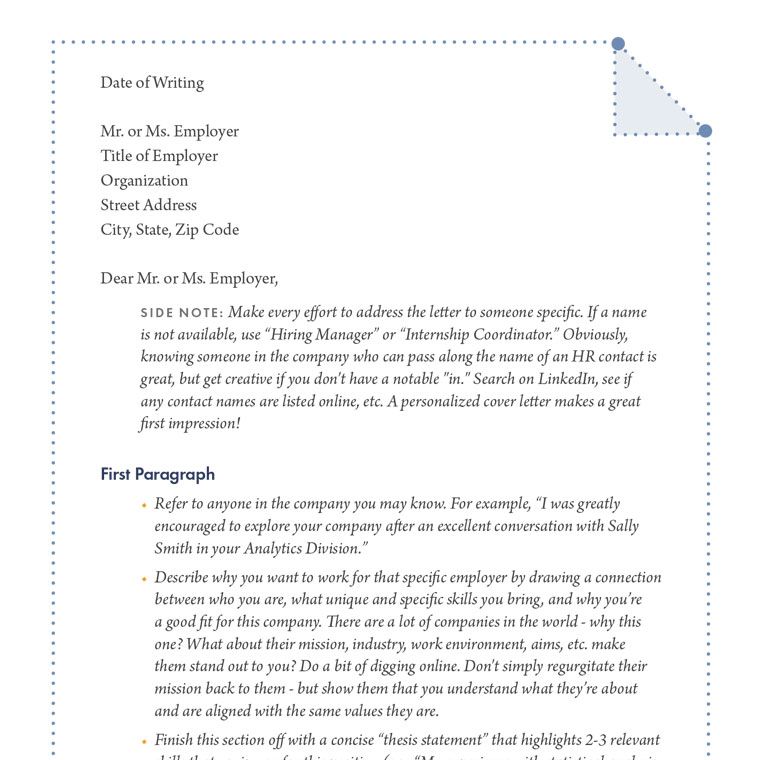Writing a cover letter is more of an art than a science: there’s not always a strict formula to follow, but there are guiding principles for writing a compelling one.
Why Bother with a Cover Letter?
Because some employers will eliminate you automatically if you don’t have one! Cover letters are an opportunity to connect the dots between your liberal arts education, your skills, interests, and experience, and the requirements of the job. They’re also a chance for you to demonstrate the written communication skills and flexibility you picked up as a liberal arts student. Employers will assess you based on the writing and the message you send – so make sure both of them are strong and error-free.
Tips for Writing an Effective Cover Letter
Mention Referrals
If someone has referred you to the position or organization, e.g. an alumni contact, family friend or parent, mention this at the beginning. Be sure you have their permission to include their name!
Target/customize Your Letter to Match Each Particular Position
Make every effort to tailor each letter or email to show the connection between your qualifications and the employer’s specific requirements. Highlight key aspects of the role and the company that you are excited about, and outline how the company’s values line up with your own.
Focus on How You Can Add Value to the Company
Not how they can make you better.
Keep Your Cover Letter Short
A good target is 250-300 words in no more than three concise paragraphs.
Format
Match your cover letter font to your resume font, and keep a consistent personal brand in all your documents.
Edit Your Cover Letter Carefully
Is it interesting and persuasive? Does it tell a compelling story of your college experience, your pertinent qualifications and skills, and a bit of your personality? Re-read it from the employer's perspective. Does it answer the question: "Why should I hire you?”
Close Your Cover Letter with a Clear Call to Action
State what you will do next, such as calling to see if an interview can be arranged at the employer’s convenience. Thank
them for their consideration.
Proofread Your Letter by Reading it Out Loud
Then have several people proofread your letter for persuasiveness, grammar, punctuation, spelling, and typographical errors. Your letter must be neat and absolutely error-free. Realize the reader will view the cover letter as an example of your written communication skills.
Sending Your Cover Letter
Decide whether it is best to send your cover letter in the body of your email or whether you're going to attach it as a separate document. Including your cover letter in the body of your email is generally more convenient and preferred for hiring managers, but if formatting is highly important to you or the employer, attaching a PDF is also acceptable.
If a cover letter is optional, submit one! Employers want to see that you’re serious about the position—writing a cover letter can do just that.
_Page_1-1-250x325.png)
